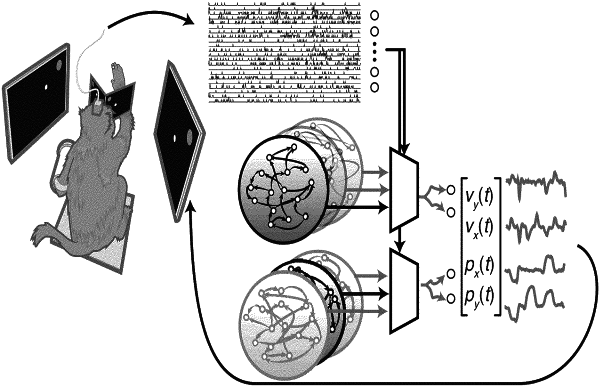| CPC G06N 3/044 (2023.01) [A61B 5/24 (2021.01); G06N 3/04 (2013.01); G06N 3/08 (2013.01)] | 17 Claims |

|
1. A brain-machine interface system, comprising:
at least one multi-electrode array implanted into a user's brain;
a prosthetic device in communication with a neural signal decoder; and
the neural signal decoder implemented using a computing device in communication with the at least one multi-electrode array and the prosthetic device, where the neural signal decoder comprises a recurrent neural network trained by:
obtaining a plurality of neural signals from the user using the at least one multi-electrode array;
modifying the plurality of neural signals by randomly adding and removing neural spikes from the plurality of neural signals such that a mean number of neural spikes across the plurality of neural signals is preserved;
instantiating the recurrent neural network, where the recurrent neural network is configured to map neural signals to kinematic functions of the prosthetic device; and
training the recurrent neural network using the plurality of modified neural signals; and
where the neural signal decoder is configured to:
obtain at least one neural signal from the user using the at least one multi-electrode array;
decode an intended movement of the prosthetic device from the obtained neural signal using the recurrent neural network;
control the prosthetic device to perform the intended movement.
|